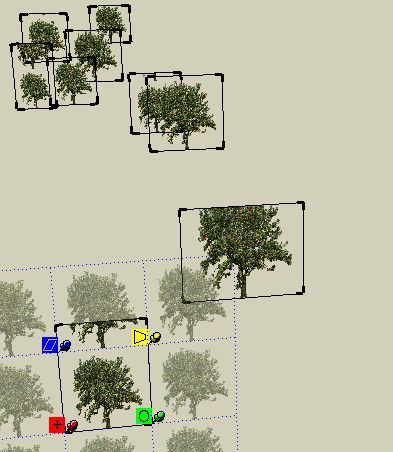SketchUp API docs
-
Hi
I've just begun to look at the Ruby part of SketchUp.
But I'm wondering, where do you go for your references?From this page: http://code.google.com/apis/sketchup/ it links to "reference documentation" (http://code.google.com/apis/sketchup/docs/developers_guide/index.html) and "wiki-style documentation" (http://groups.google.com/group/SketchUp-Plugins-Dev/web/google-sketchup-ruby-api)
The wiki appear to contain more info.For instance, the Face object:
The wiki page (http://groups.google.com/group/SketchUp-Plugins-Dev/web/Ruby-Face.html) list these methodsall_connected,area, back_material, back_material= , classify_point, edges, followme, get_UVHelper, loops, mesh, normal, outer_loop, plane, position_material, pushpull, reverse!, verticeswhile the "reference documentation" only lists these:
area, edges, followme, loops, mesh, normal, outer_loop, plane, pushpull, reverse!, verticesAnd none of them mention that you can use .material on the face. (just guessed it'd be there since I noticed there was an back_material.)
And yet, on some topics I feels there's much missing. Such as position_material:
@unknownuser said:
position_material
The position_material method is used to position a material on a face.
Syntaxface.position_material material, pt_array, on_front
Arguments
material - a Material object
pt_array - an array of Point3d objects used to position the material
o_front - true to position the texture on the front of the Face or false to position it on the back of the Face.
CommentsThe pt_array must contain 2, 4, 6 or 8 points. The points are used in pairs to tell where a point in the texture image is positioned on the Face. The first point in each pair is a 3D point in the model. It should be a point on the Face. The second point in each pair of points is a 2D point that gives the (u,v) coordinates of a point in the image to match up with the 3D point.
In this case, it doesn't explain what the difference between using 2,4,6 or 8 points is.
So my question is: is there a different source of documentation? Is it just me that feel that the documentation is a bit sparse? From other types of scripting I'm used to more information than what I can find on the SU API.
-
I'm also following this with interest. I often pretend that I will Ruby someday, but now that DC's are out, I have taken to them rather quickly and I am quickly seeing things I would like to do that is well out of their current abilities. Enter Ruby....but I also get lost in the docs as they stand currently.
Is there supposed to be better, newer, shinier docs coming out for SU7 soon?
Chris
(Hi Rick, Todd, and Tavi! I don't get into this forum to say hi to you guys very often...)
-
bump?
-
Yes, the documentation on this method is sparse, yet self-contradictory.
From the explanation:
"The second point in each pair of points is a >>> 2D <<< point that gives the (u,v) coordinates"
From the example code:
pt_array[1] = Geom:: >>> Point3d <<< .new(0,0,0)This is the point array I used in a call to position_material
pt_array = []
pt_array[0] = face.vertices[0]
pt_array[1] = Geom::Point3d.new(0,0,0)
pt_array[2] = face.vertices[1]
pt_array[3] = Geom::Point3d.new(1,0,1)
Apparently, the first two points set the location of the red pin, the next two
set the green pin. I'm still working out the other two.This is the result I get from using the point array above...

-
The effect of how many sets you use are as following:
1 set: The origin of the texture, width and height is taken from the material width and height
2 sets: Origin and scale+alignment
3 sets: Origin, scale+alignment, Skew
4 sets: Origin, scale+alignment, Skew, Distortion
Advertisement







